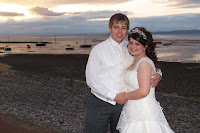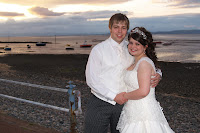
If you have the best equipment it does not mean that you will take the best photographs. You will still have to get up early to take photos during the 'golden hour'. This hour is the first hour of daylight when the sun is low in the sky and the light is softer and warmer. You can get the same effect in the last hour of sunlight, but the difference is you will have more people in your landscape photographs. I have described methods of touching up the photograph which would remove a person from the background of a photo, but it is much better if they are not there in the first place. There was nobody in this photo of 'The Platform' at Morecambe but it was taken during the golden hour in the evening.
You have to be ready for the photo at the right time and you also have to be at the right place. It is not just about being in Morecambe at the right time. I am not even talking about a helicopter ride or a holiday on safari, but for a good composition it might just be that you have to take two steps to the right to avoid a cluttered background. If you move slightly the background may become much more significant. There is one photo on my website where the church tower is behind the heads of the bride and groom. No other photographer would have that photo because they were not in the same place and kneeling.
Happy snapping








